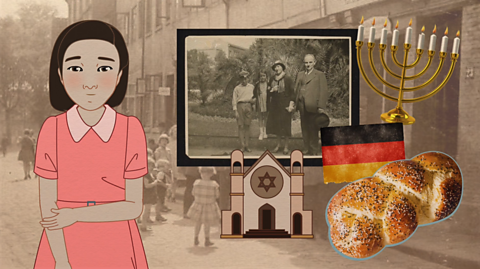Key points
Following the defeat of France, Britain and the empire was left to fight Germany.
To successfully invade Britain, Germany needed to control the skies over the English channel.
This led to the Battle of Britain in the summer of 1940, followed by the targeted bombing of towns and cities during the Blitz.
Background to the Battle of Britain
Germany had overwhelmed France and seized control of the capital city, Paris, in June 1940. 338,000 British and French soldiers had been evacuated from Dunkirk.
As Britain is an island, Germany needed to send soldiers in by sea to invade successfully. To do this safely, they would need to have control of the skies over the English Channel, so the German LuftwaffeThe German air force. needed to defeat the British RAFThe Royal Air Force - the collective name for Britain's fighter and bomber planes..
The Luftwaffe and the RAF
Hitler had realised the importance of a modern and successful air force. The Luftwaffe had already been a key part of the German advance through Europe. By the summer of 1940, Britain was their next target, though the RAF was a significant barrier. The main aeroplane used by the Luftwaffe during the Battle of Britain was the Messerschmitt, while the RAF had the Hurricane and Spitfire.
The Luftwaffe heavily outnumbered the RAF. During the Battle of Britain, they had 2,550 fighter planes available, while the RAF only had 749. British pilots were also less experienced that the Luftwaffe pilots. The average age of an RAF pilot in the Battle of Britain was just 20 years old.
As the fighting was taking place over Britain, the RAF did have an advantage in that if their planes or pilots were shot down, they could be recovered. Luftwaffe planes or pilots that were shot down were captured.
The battle
The Battle of Britain began on 10 July 1940. The head of the Luftwaffe was Hermann Goering. Germany codenamed their planned invasion of Britain Operation Sea Lion. Goering planned for British Fighter Command to be destroyed, as well as airfields and RAF stations where mechanics, engineers and support staff were based.
As the battle went on, the Luftwaffe also targeted factories, where aeroplanes were made, and radarA system of using radio waves to detect the location of objects from a particular place. Used by Britain in World War Two to locate German aircraft heading towards Britain. stations.
Germany had underestimated the strength and skill of the RAF. The success of Britain’s air force owed a great deal to the contributions of many pilots from across the British Empire: Jamaica, Canada, Australia and New Zealand contributed pilots. The RAF’s ranks were also boosted by pilots from Poland and Czechoslovakia, who had escaped capture by the German military.
By September 1940, the Luftwaffe was not able to sustain the losses it was experiencing.
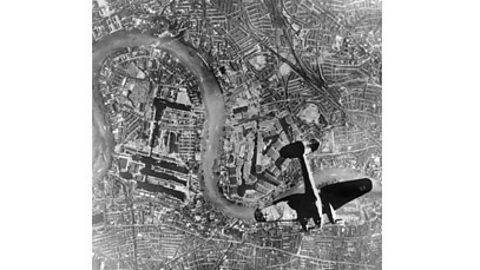
During the Battle of Britain, Prime Minister Winston Churchill paid tribute to the enormous efforts made by the fighter and bomber crews.
In a speech delivered in August 1940, he famously said, ‘never in the field of human conflict was so much owed by so many to so few’.
Why did Poland contribute troops during the Battle of Britain?
When Germany invaded Poland on 1 September 1939, thousands of members of the Polish Air Force fled to France, realising that Poland was going to be taken over.
Following the German invasion of France and evacuation of Dunkirk, there were a total of 8,384 Polish airmen in Britain. Many of the Polish airmen were extremely well skilled. They trained in British planes, learned English and worked closely with the RAF.
During the Battle of Britain, 145 Polish airmen fought for the RAF.
In total during World War Two, 1,903 Polish personnel were killed fighting for Britain. They are remembered on a war memorial at RAF Northolt.
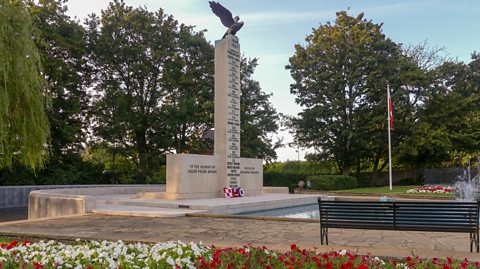
British defences
Britain used several different methods to help defend themselves against the threat from the Luftwaffe. These were crucial in their eventual victory:
Radar: Britain built a series of radarA system of using radio waves to detect the location of objects from a particular place. Used by Britain in World War Two to locate German aircraft heading towards Britain. stations on the south coast. They were able to detect German planes up to 80 miles away. This gave Britain time to scrambleTo get a plane and its pilot ready to take off in an emergency. planes and be ready to fight the Luftwaffe when they arrived.
Observer corps: 30,000 civilian volunteers were used to track and report on German planes when they were over Britain. Their information helped the RAF to plan their tactics.
The Dowding System: Fighter Command was the part of the RAF responsible for fighter planes. Their headquarters were at Bentley Priory, led by Hugh Dowding. The information collected from radar stations, along with reports from Observer Corps was put together and used to plan air defences.
Barrage balloons: These were large balloons held in the air by steel cables, to protect towns and cities. They were designed to force enemy aircraft to fly higher so they would find it harder to hit their targets.

The role of women in the battle
Members of the Women’s Auxiliary Air Force (WAAF) played a vital role during the Battle of Britain.
Many women were employed as plotters. This job involved tracking German planes as they made their way to Britain, as well as keeping an eye on how many aircraft were coming. They received information about any incoming attacks from radar stations and the Observer Corps, and the planes’ movements were tracked using wooden blocks, which would be pushed around a large table. These blocks were colour coded to show how up-to-date the information was. British aircraft were also tracked in a separate room.
The Blitz
The Luftwaffe decided to change their tactics and started targeting civilianA person who is not a member of the armed forces, police or actively involved in fighting in a conflict. targets and key landmarks. This was known as the Blitz.
Major British towns and cities were targeted from September 1940 to May 1941. The aim was now to try and force the British to surrender, rather than attempt to destroy the RAF. incendiary deviceAn explosive weapon intended to start fires. were used to start fires and light up targets on the ground, before bomber planes tried to target populated areas.
The Blitz caused huge loss of life. 40,000 civilians were killed and 2 million houses were damaged or destroyed.
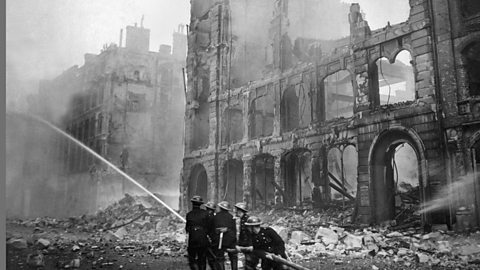
Which cities were targeted during the Blitz?
The German Luftwaffe focused on key cities and towns in Britain. Hermann Goering, the head of the Luftwaffe, identified targets for different reasons.
Capital city: London was the main target of the Blitz. It experienced 57 consecutive days of bombing from 7 September 1940. Docks were targeted, as well as factories, railways and other industrial targets. Civilian areas were also badly damaged, causing large numbers of casualties.
Ports: Cities such as Liverpool, Hull, Bristol, Belfast, Glasgow and Swansea were targeted. These cities were home to British naval vessels, so the Luftwaffe aimed to damage the navy’s ability to protect British ships crossing the Atlantic, and also limit their blockade of German ports.
Industrial centres: Sheffield, Coventry, Manchester and Birmingham were cities with large numbers of factories and raw materials that were producing military equipment and supplies for the British war effort.
Propaganda and ‘Blitz Spirit’
The government had realised the importance of using propagandaPutting forward biased information to persuade people to believe a particular point of view. to maintain morale and support for the war, particularly during times such as the Battle of Britain and the Blitz, when there was a real threat to Britain and large numbers of casualties. The government wanted to create the idea of a ‘Blitz Spirit’ so that, despite the bombing and damage being caused, British people would carry on their lives as normal.
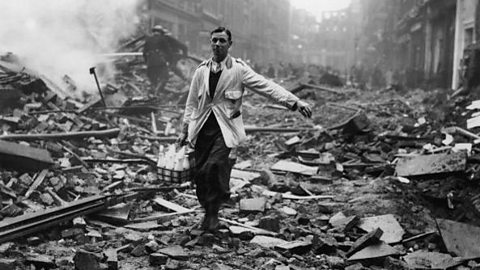
The Ministry of Information oversaw the stories that newspapers were printing. They censored information about such things as planned military operations and details of troop movements. Stories about the Blitz were allowed to be published, but the Ministry of Information wanted people to feel as though life was carrying on as normal. They employed photographers and used pictures to portray this image.
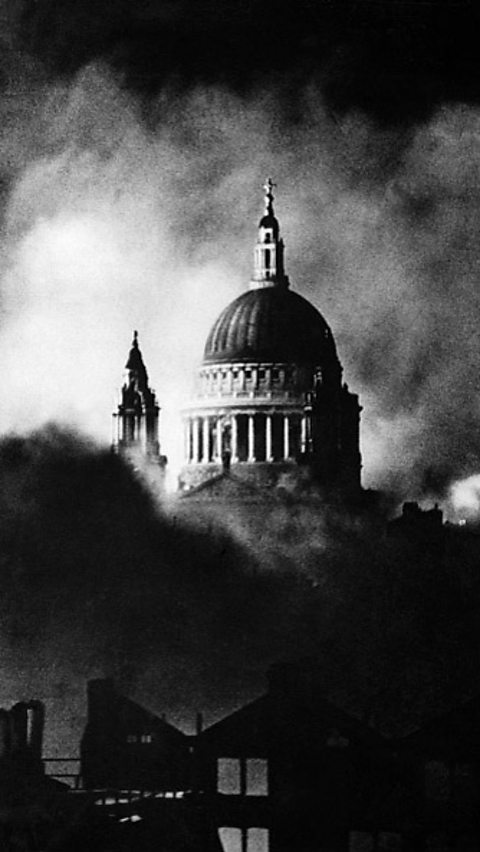
Newspapers carefully selected pictures like the ones above to try and suggest to the British people that there was a ‘Blitz Spirit’. In recent years, historians have challenged this view by using first-hand testimony of people who lived in London or other cities that were bombed by the Luftwaffe.
What was it like to live through the Blitz?
Many people who lived through the Blitz have shared their stories. Their witness accounts are a very valuable source for historians. Shirley Stead was six when the Blitz began, and she shared some of her memories in 2010:
"I lived with my family in Hitchin, Hertfordshire at the time of the Blitz - I was six when it started.‚ÄØMy father was an engine driver on the railway who was regularly caught in air raids over London and marooned in the tunnels as he spent most of his time transporting the armed forces to and from London. At the beginning of the Blitz, we used to go to the air raid shelter, but after a while we stayed in the house, because the bombs never fell in our area.‚ÄØHowever, I do remember seeing the red glow like a pudding basin on the horizon when a bomb fell nearby and I remember the noises of the aeroplanes coming over."
Test your knowledge
Play the History Detectives game! gamePlay the History Detectives game!
Analyse and evaluate evidence to uncover some of history’s burning questions in this game.

More on World War Two and the Holocaust
Find out more by working through a topic
- count4 of 10

- count5 of 10
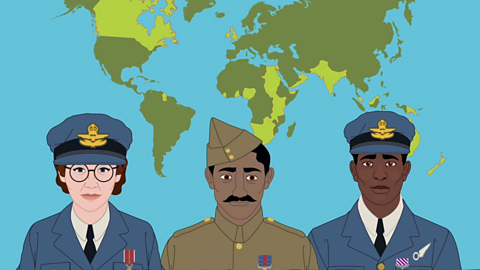
- count6 of 10
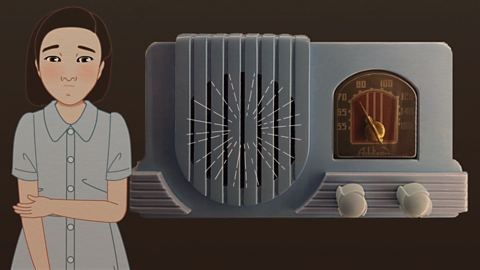
- count7 of 10
